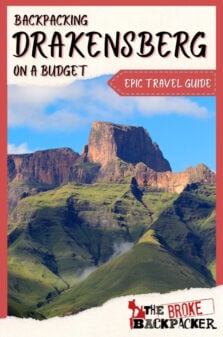I’ve gone trekking in over a dozen countries and the Drakensberg mountains of South Africa has to be one of the most rewarding places that I’ve ever visited.
For me, there’s nothing else like ‘The Berg;’ a wall, a thousand meters high, fortified by cruel spires and towers that seem to resemble the backs of sleeping dragons, standing there in defiance of all invasion; it’s no wonder the original Zulu name for the range is ‘uKhahlamba,’ meaning “Barrier of Up-Pointed Spears.” To climb to the top of that fortress, and stand on edge of its rampart is like mounting a throne above the entire world.
I cannot recommend enough visiting this epic landscape.
The Drakensberg is not without dangers though; it is, in my opinion, one the most difficult wildernesses that I’ve ever navigated.
Horribly rough trails, violent storms, and a real sense of isolation make these mountains truly intimidating. If you want to hike in this area or, better yet, climb to the top of the escarpment, then preparation is vital.
The guide that I have presented here is my attempt at making the Drakensberg more accessible to the foreign backpacker with intermediate to advanced experience in wilderness survival.
I will cover several topics from navigation to local hazards, in an overview. To the seasoned hikers, some of the information provided may sound rudimentary or repetitive, but there are unique details here concerning the Drakensberg that require attention.
After reading, I highly encourage those interested to conduct further research as I can only cover so much, and the Drakensberg wilderness requires the utmost respect and understanding.

Heading Off-Grid? • Download This Guide as a PDF!
Sign up to The Broke Backpacker’s EXCLUSIVE VIP AREA below and download our top backpacking guides as PDFs – go offline with peace of mind!
- What is the “Drakensberg?”
- When is the Best Time for Hiking Drakensberg
- Top Tips for Backpackers in South Africa and the Drakensberg
- Where to Begin your hike in the Drakensberg
- What to Expect From the Drakensberg’s Hike
- What to Pack For the Drakensberg
- Where to Sleep at the Drakensberg
- How to Navigate Through the Drakensberg
- Certain Dangers in the Drakensberg
- Are You Ready?
- Make Money Online Whilst Backpacking the Drakensberg
- Being a Responsible Backpacker in the Drakensberg and South Africa
What is the “Drakensberg?”
Though the Drakensberg is, in fact, a huge geological region that covers much of southern Africa, generally, the term “Drakensberg” is used to describe the 180 km long section that marks the separation between the eastern border Lesotho and South Africa. There are so many incredible places to stay in the Drakensberg and you’ll be spoiled for choice when it comes to natural beauty!
Hundreds of millions of years ago, there was enormous volcanic activity in the area causing large amounts of lava to surface and solidify.
Since then there has been less activity, but much uplifting and erosion, creating the features of the Drakensberg that we know today: the stone pinnacles, flat top, and sheer cliffs, forming a geographically classic ‘escarpment.’
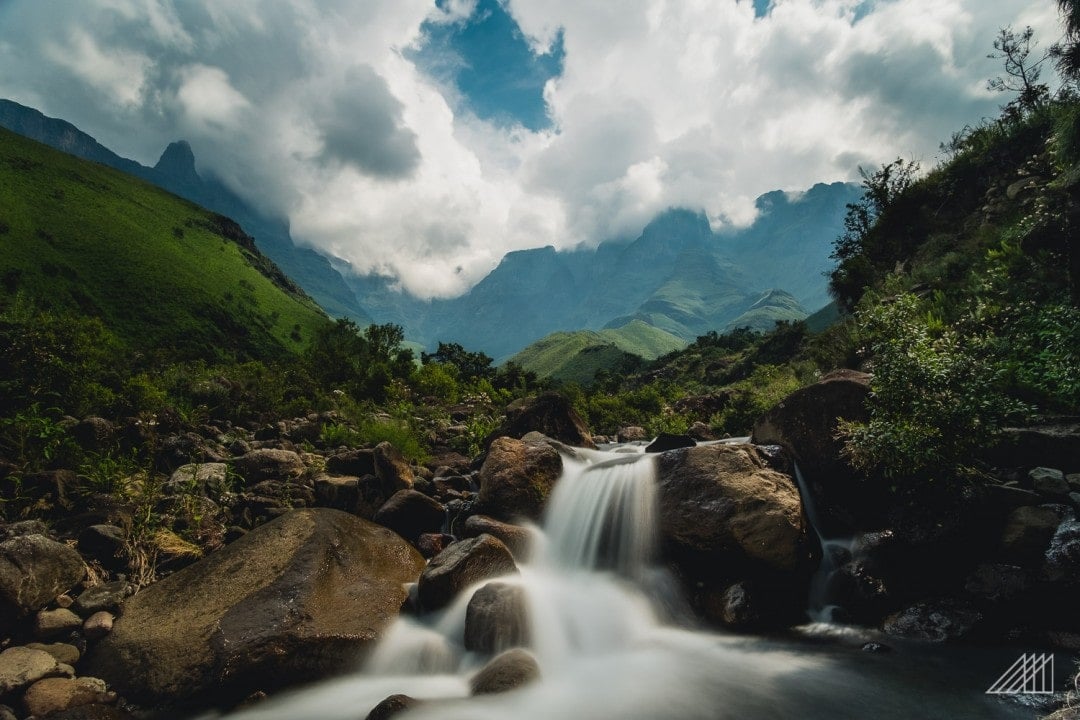
When viewed from the South African side, below, the escarpment appears like a great wall, rising prominently over the lower, terraced valleys and hills of, what is referred to as, the ‘Little Berg.’ Many casual hikers choose to stay in the lowlands and appreciate the escarpment from afar; for others, which hopefully includes yourself, the goal is to climb to the top of the Drakensberg escarpment.
For the sake of continuity, when I refer to the Drakensberg in this guide, I will only be referring to that 180 km stretch that has been described so far.
The Drakensberg is subject to four seasons: an increasingly wet spring, an unpredictable summer, a pleasant autumn, and a drier, colder winter. Autumn (April-May) is generally considered the best time to visit. The weather is more stable (thunderstorms are less frequent), the temperature isn’t freezing yet, and the landscape’s still lush.
Many of the seasonal rivers will begin to run low by this time of the year, but finding water still shouldn’t be a problem.
That being said, and depending on your preference, hiking is possible year round in the Drakensberg mountains. Winter is a popular time, as, aside from the occasional brushing of snow, the sky is clear and weather is predictable.
This time of year is very cold though, especially on top of the escarpment, and the landscape can be less than inspiring as all of the grass has died from the frost and turned a dull brown. Personally, I was in the area from February-March, the end of summer season, and loved it.
It rained, near constantly, and the thunderstorms were violent, but I loved the drama; the heavens were fierce, water poured off the edge of the Berg, and the hills were a brilliant green. With patience and caution, all of your plans in the Drakensberg are possible.
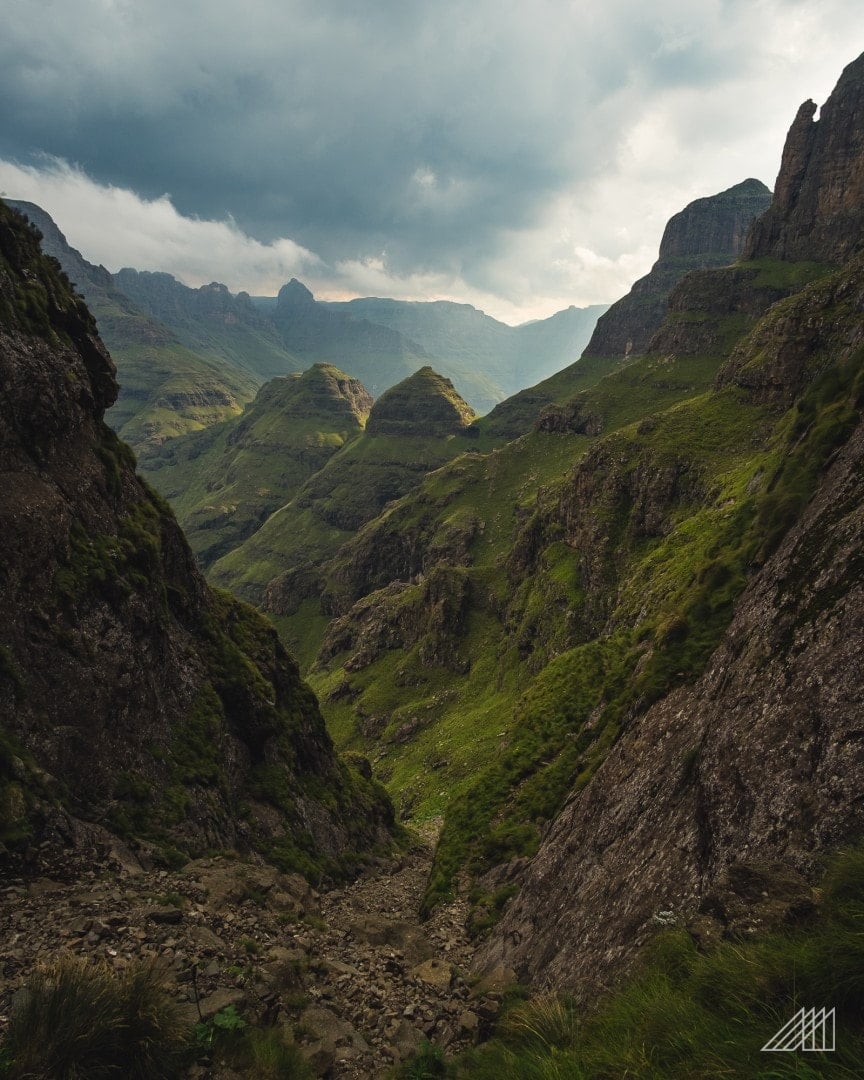
To keep your spending to an absolute minimum whilst traveling in South Africa I recommend sticking to these basic rules of budget adventuring….
Camp: With plenty of gorgeous natural places to camp, bringing a tent to the Drakensberg is an absolute must. Check out this post for a breakdown of the best tents to take backpacking.
Cook your own food: I took a small gas cooker with me to the Drakensberg and cooked a lot of my own meals whilst camping, I ate very well indeed! – check out this post for info on the best backpacking stoves.
Haggle: Haggle as much as you can. When not out in the bush, you’ll need to turn your haggle game on! You can always get a better price for things especially while in local markets.
Pack a travel water bottle and save money every day!
Why You Should Travel to Drakensberg with a Water Bottle
Plastic washes up on even the most pristine beaches… so do your part and keep the Big Blue beautiful
You aren’t going to save the world overnight, but you might as well be part of the solution and not the problem. When you travel to some of the world’s most remote places, you come to realise the full extent of the plastic problem. And I hope you become more inspired to continue being a responsible traveller.
Plus, now you won’t be buying overpriced bottles of water from the supermarkets either! Travel with a filtered water bottle instead and never waste a cent nor a turtle’s life again.
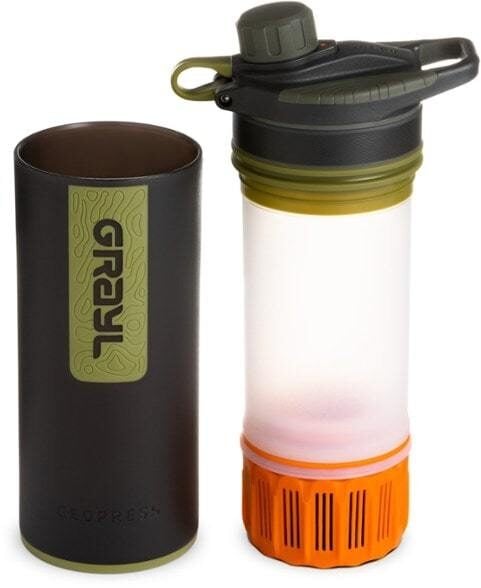
Drink water from ANYWHERE. The Grayl Geopress is the market’s leading filtered water bottle protecting your tum from all the waterborne nasties. PLUS, you save money and the environment!
Single-use plastic bottles are a MASSIVE threat to marine life. Be a part of the solution and travel with a filter water bottle.
We’ve tested the Geopress rigorously from the icy heights of Pakistan to the tropical jungles of Cuba, and the results are in: it WORKS. Buy a Geopress: it’s the last water bottle you’ll ever buy.
Buy a Geopress! Read the ReviewJoining an Organized Tour in Drakensberg
For most countries, Drakensberg included, solo travel is the name of the game. That said, if you are short on time, energy, or just want to be part of an awesome group of travelers you can opt to join an organized tour. Joining a tour is a great way to see a majority of the country quickly and without the effort that goes into planning a backpacking trip. However—not all tour operators are created equal—that is for sure.
G Adventures is a solid down-to-earth tour company catering to backpackers just like you, and their prices and itineraries reflect the interests of the backpacker crowd. You can score some pretty sweet deals on epic trips in Drakensberg for a fraction of the price of what other tour operators charge.
Check out some of their awesome itineraries for Drakensberg here…
Where to Begin your hike in the Drakensberg
There are roughly six areas from where you can begin your hike in the Drakensberg, and each with two to four passes that you can use to access the top of the escarpment.
Each vary in difficulty and offer different experiences. They are, from north to south: 1) Royal Natal National Park, 2) Mnweni Cultural & Hiking Center, 3) Cathedral Peak Hotel, 4) Champagne Valley, 5) Injisuthi Camp, and 6) Giant’s Castle. Note that all of these areas are located in South Africa and not Lesotho.
Being a national park, The Royal Natal is the most developed area, and also the smallest; overnights are limited and the only way to climb to the top of the Berg is via Mont Aux-Sources, which is actually a ninety minute drive northwest of the park.
The Champagne, Cathedral, and Giant’s Castle areas generally offer the most in terms of trails and accommodation, though the latter two will be more expensive. Finally, Injisuthi and Mnweni are the most primitive of all, offering only basic chalets and campgrounds.
The trails can be more challenging as well but offer more rewarding views. Note that you can actually link multiple areas together when hiking because there are two main trails that run the whole length of the Drakensberg escarpment: one on the lower Contour Path, and one (roughly) on top of the escarpment.
For more information on specific trails, especially the passes, I highly recommend visiting the website Vertical Endeavour and checking the Passes and Forum sections. Both are extremely informative.
What to Expect From the Drakensberg’s Hike
The Drakensberg can only be described in one word: wild.
There are several well kept and straight forward trails in lower parts of the range but these are fewer than expected. Many trails are vague, uneven, and, in some places, destroyed by the elements. Aside from the well trodden, popular paths, this is not a place for beginner hikers.
Experience in route finding, navigation, and wilderness survival are all paramount and backpackers should have above average fitness to clear the passes.
It is not uncommon to climb more than 700 meters, at grades less than 45 degrees, and through trail-less boulder fields in order to top out. Once I had to ford a flooded river where the water was up to my stomach (I’m 191 cms or 6’3″ as well) and was nearly washed away by the current.
Trials are endless in the Berg. As always, having good common outdoors sense is your greatest ally. Don’t bite off more than you can chew (I had to cut my trips short on two occasions due to exhaustion) and always have a backup plan. Trekking with partners is always preferable, but, as is my case often, those who want to go on their own are welcome to do so if they know the full risks involved.
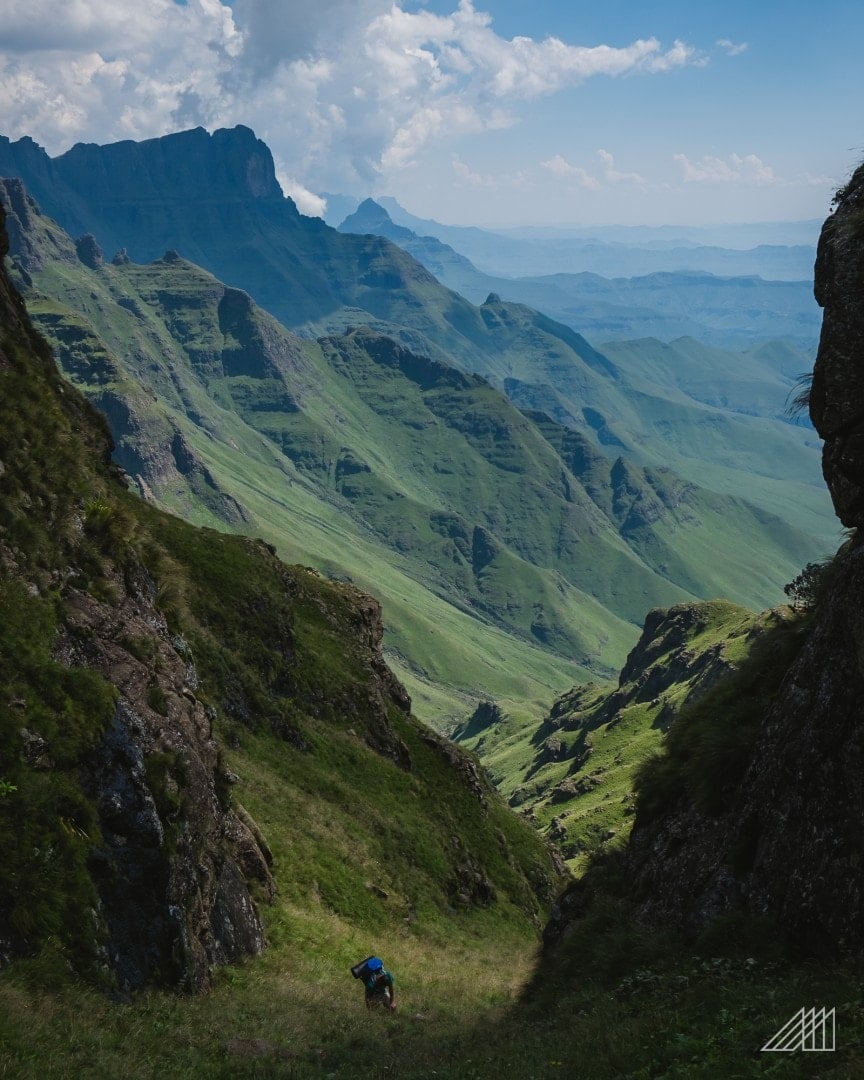
Cold and waterproof gear will be essential. The top is more than 3000 meters in elevation and temperatures will vary greatly depending on the weather and time of day.
When I climbed the Champagne Castle in the summer, day time temperatures would be as high as 30 degrees Celsius and humid, only to drop to less than 10 degrees in the night.
If you’re going during the rainy season I cannot stress enough the importance of keeping your gear dry as shelter can be very unreliable. There are no trees above 2000 meters and many caves can be flooded or too exposed to properly guard you.
Food wise: if you intend to spend time on top of the escarpment, you’ll have to bring multiple days of food and be able to cook for yourself since day trips are nearly impossible to the top.
Food can occupy lots of space, and between a stove, pots, and utensils the weight can add up quick. For those looking for advice on backcountry cooking, I suggest reading The Broke Backpacker’s own exceptional piece on wilderness cooking as both covers the subject in more depth.
It should also be mentioned that the water that comes from the Drakensberg mountains is some of cleanest in South Africa. Though caution should be exercised while around Basotho communities and their livestock, boiling is almost never necessary and water can be drunk straight from the source. Just be sure to draw water from running streams and above human settlements.
For plenty of inspiration on tasty South African cuisine including some of the best dishes to try in Cape Town, check out this post.
Don’t forget to Pack a travel water bottle. You won’t have the option to buy bottled water out here, so bring your own bottle and stay hydrated!
As always, make sure to pack the essentials as well; the complete backpacking checklist can be found here.
You have two options; you can sleep in 1) a tent or 2) a cave.
Each has its own set of advantages and disadvantages.
Using a tent can be more convenient than going from cave to cave because the latter can be either few and far in between, and/or uninhabitable because of heavy rainfall and flooding.
The caves can be quite small as well and, in times where there are lots of hikers, completely full. Some caves will even require a “reservation” with the local parks organization, KZN Wildlife; a list of caves can be found here. With a tent, you have a much greater flexibility of finding a place to sleep as there is lots of space on top of the escarpment to pitch.
Carrying a tent means extra weight though, and, in more extreme weather, will not provide enough protection. Remember: there is little shelter outside of the caves, so you will be at the mercy of the elements.
If you do intend on sleeping in caves, you will have the option of leaving your tent behind and save weight, though KZN Wildlife advises against this in case your itinerary should change and a cave can’t be reached; I leave that decision to you, the backpacker, as you have your own sense of security and risk management.
Carrying a good sleeping bag is a must. In all but the winter, I suggest a synthetic bag as close to 0 degrees Fahrenheit as possible; it’s not quite cold enough to justify a down bag and, should the weather become very wet (which it usually does) a synthetic will dry quicker.
A sleeping mat will help insulate you and make things more comfortable. I also suggest packing a tarp of some sort as well for added rain protection; I pack a very light one and use it as either a footprint or, in a pinch, a rain cover.
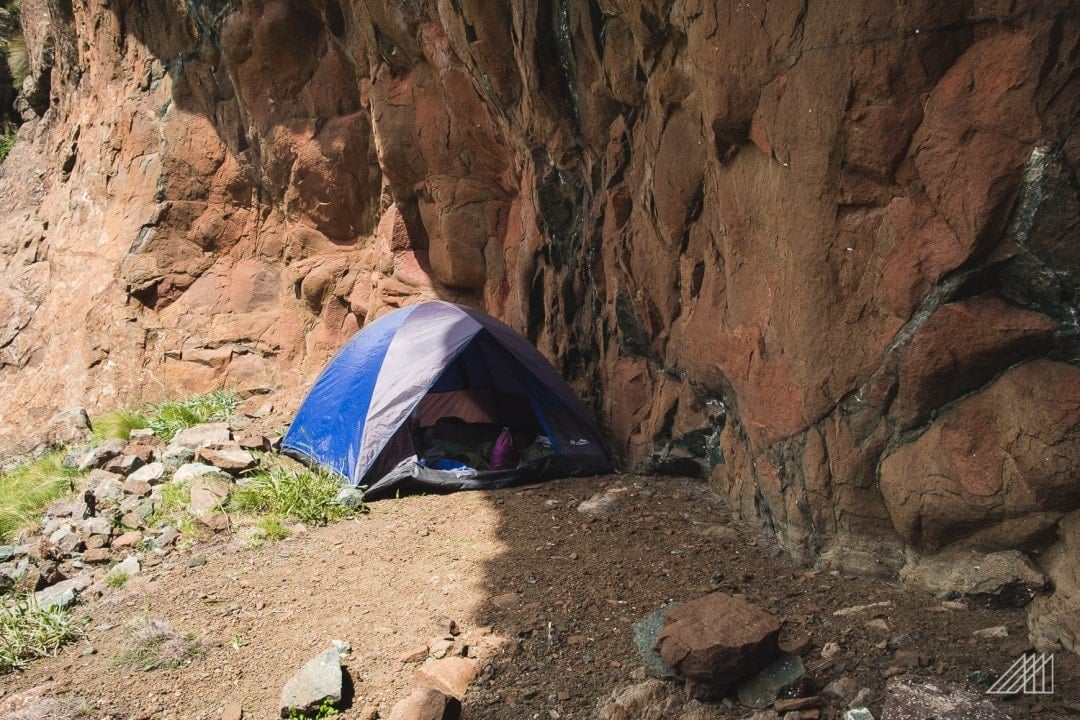
Outside of the popular walks in the lowlands, the trails of the greater Drakensberg have to be some of the roughest, most primitive that I’ve ever used.
Hikers should not expect to simply follow a path all the way up to the escarpment. On many occasions you will have to make your own trail and bush walk; this is especially true on top of the Berg where there are only game trails that quickly deviate and become confusing.
I once followed a cattle trail too long and ended up walking fairly deep into Lesotho (the wrong way) before realizing my error and had to backtrack an hour.
Hikers should be more than proficient in map reading and navigation before beginning any large tour. A GPS could also be very helpful. If you have device specifically for navigation, great, but I suggest looking into one of the many smartphone GPS apps that are available today; they are usually cheaper and just as effective.
Next time you’re on your phone, try browsing the app store for one of these. Regardless of what you use for a GPS, make sure to test it prior to hiking into the wilderness.
You don’t want to start your expedition and find that the signal is less than satisfactory because your life will dependent on it. Take it on a smaller hike in one of the valleys for evaluation. Also remember that, in the end, no GPS is a true replacement for a good sense of direction, so be sure to also bring a physical map and be able to read it.
You should always register with the ranger stations prior to beginning every hike, and also check in when you finish.
Recording your name and information could save your life as the rangers periodically check to see if you’ve returned or not based on the itinerary that you’ve provided. There is a station located at every trail head in the six areas that I have mentioned.
If you should lose the trail, the most important thing is to never panic. Stop, find your breath, and assess the area. Look for signs around you of human intervention – scars, straight lines, trampled vegetation – and do your best to go in the right direction. Chances are there will be cairns created by other hikers as well. These way markers can be very handy, and possibly your only sense of direction at times, but be careful because some of them can lead to nowhere.
Use cairns but don’t rely solely on them.
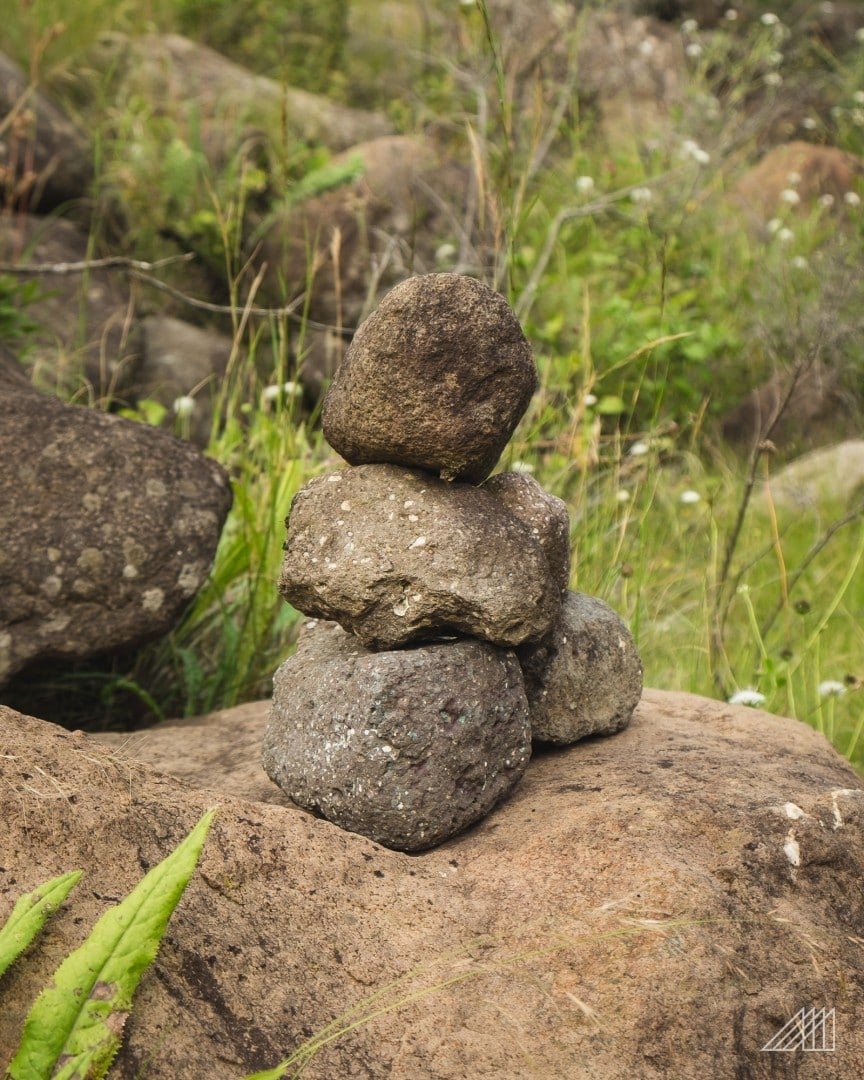
Outside of the usual dangers that one encounters while backpacking, the Drakensberg wilderness presents some unique obstacles; they are: 1) snakes, 2) lightning, and (to a lesser extent) 3) Basotho tribesmen.
According to Southern Drakensberg Tourism, there are over 25 species of snakes in the region, 4 of which are dangerous: the Puff Adder, Berg Adder, Night Adder, and Rinkhals.
Though they all may deliver very painful and potentially fatal bites, the Puff Adder is particularly dangerous and is, in fact, the primary culprit of snake bite fatalities in all of Africa.
Hikers should exercise caution and common sense when walking on the trail: don’t aimlessly wander in long grass, and keep an eye out. In reality, it is very rare to encounter these snakes on the trail.
Your biggest concern should be thunderstorms. Lightning the number one killer in the Drakensberg, probably due to the fact that the area receives the highest frequency of air-to-ground lightning strikes in the entire world.
If you’re in the Drakensberg from December-March, expect storms to be a daily occurrence in the afternoon. If you see the sky begin to darken, and clouds rolling in, find shelter immediately and make camp. This means early starts are very important in the mountains because you’ll be grounded by 3 or 4 pm. Be sure to have plenty of cover, in a cave or under an overhang, and wait it out.
While hiking in the Drakensberg, chances are you’ll meet the local Basotho people. Remember that the top is technically the nation of Lesotho. Many are herdsmen and some are smugglers or illegal aliens, most are harmless.
When you meet a Basotho tribesman, don’t be scared and don’t be intimidating; people are often accosted because they lack manners. Offer them food or water and be genial. If they begin to bother you, say goodbye and walk away.
Check every once in a while to see if you are being followed though because there’s still a small chance that you can be robbed in the night. When making camp be sure to keep your belonging close and secure. Worst case scenario: the Basotho only wants your boots and never your life. Just remember that they are people too and often react best to kindness and hospitality.
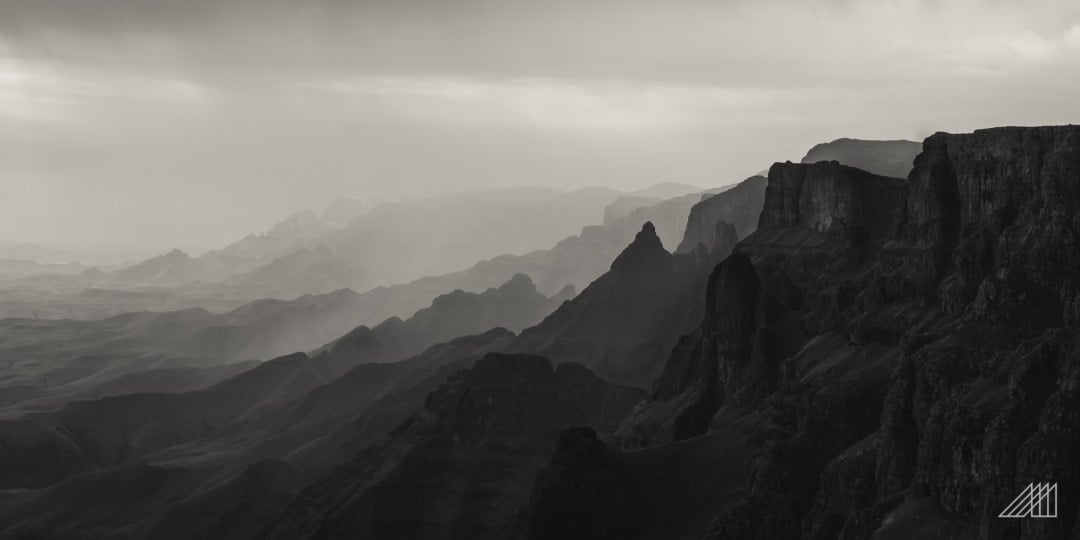
Are You Ready?
Are your bags packed?
Have you studied your maps?
Are your camera batteries charged?
If you’ve read this far, you’re probably just as interested in the Drakensberg as I was once. After a hundred sleepless nights of dreaming about the mountains, surfing the web, I started planning my trip; what happened next for me was nothing short of rapturous.
I eventually made it to the Drakensberg mountains and it delivered, in full. It only takes a little curiosity and healthy dose of preparation to accomplish anything. With the knowledge that you have acquired from this article, you now have the beginnings of an adventure.
As I’ve said before, I highly recommend doing further research into the Drakensberg; I haven’t spoken much about specific itineraries so I leave that to you.
Some trails require a moderate amount of dedication, and others are monumental, but don’t worry about finding the perfect one because every path to the top is spectacular. So get ready; the Drakensberg awaits!
Make Money Online Whilst Backpacking the Drakensberg
Traveling in South Africa long-term? Might you have some down time on your hands when you are not hiking?
Are you a native English speaker looking to earn cash whilst on the road? Teaching English online is a great way to earn a consistent income—from anywhere in the world with a good internet connection.
Depending on your qualifications (or your motivation to obtain qualifications like a TEFL certificate) you can teach English remotely from your laptop, save some cash for your next adventure, and make a positive impact on the world by improving another person’s language skills! It’s a win-win! Check out this detailed article for everything you need to know to start teaching English online.
In addition to giving you the qualifications to teach English online, TEFL courses open up a huge range of opportunities and you can find teaching work all over the world. To find out more about TEFL courses and how you can teach English around the world, read my in-depth report on teaching English abroad.
Broke Backpacker readers get a 35% discount on TEFL courses with MyTEFL (simply enter the code BACKPKR), to find out more, please read my in-depth report on teaching English abroad.
Whether you are keen to teach English online or looking to take your teaching game a step further by finding a job teaching English in a foreign country, getting your TEFL certificate is absolutely a step in the right direction.
Being a Responsible Backpacker in the Drakensberg and South Africa
Reduce your plastic footprint: Perhaps the best thing you can do for our planet is to make sure you do NOT add to the plastic problem all over the world. Don’t buy one-use water bottles, the plastic ends up in landfill or in the ocean. Instead, pack a tough travel water bottle.
Go and watch A Plastic Ocean on Netflix – it’ll change how you view the plastic problem in the world; you need to understand what we are up against. If you think it doesn’t matter, get off my fucking site.
Don’t pick up single use plastic bags, you’re a backpacker – take your daypack if you need to go to the shop or run errands.
Bear in mind, that many animal products in countries you travel through will not be ethically farmed and won’t be of the highest quality. I’m a carnivore but when I’m on the road, I only eat chicken. Mass-farming of cows etc leads to the rainforest being cut down – which is obviously a huge problem.
Need more guidance? – Check out our post on how to be a responsible backpacker.
Backpacking South Africa can be one hell of a party at times. Take it from me, it can be easy to get carried away. It is important to keep in mind that you are an ambassador for your country, which is awesome. We can make a positive impact on people when we travel and get rid of any ugly stereotypes that may be associated with your country.
If you visit small communities in the rural always ask before taking photos (it is generally a good idea to ask in cities as well). The people who live in these villages are not exhibits in a museum. They are normal folks just living their lives. Always show them the complete respect that they deserve.
I know it can be hard, but do your best to use the least amount of plastic water bottles that you can. Refill the ones that you do buy! Use a Grayl Geopress – great way to purify your water whilst trekking as well!
Backpacking in South Africa or any region for that matter often illuminates some of the great socio-economic inequalities of the world. Never take it for granted that you are healthy and financially able to go traveling. Show the world around you some gratitude and help to make a positive impact on it. Most of all have the time of your life and spread the love!

And for transparency’s sake, please know that some of the links in our content are affiliate links. That means that if you book your accommodation, buy your gear, or sort your insurance through our link, we earn a small commission (at no extra cost to you). That said, we only link to the gear we trust and never recommend services we don’t believe are up to scratch. Again, thank you!



